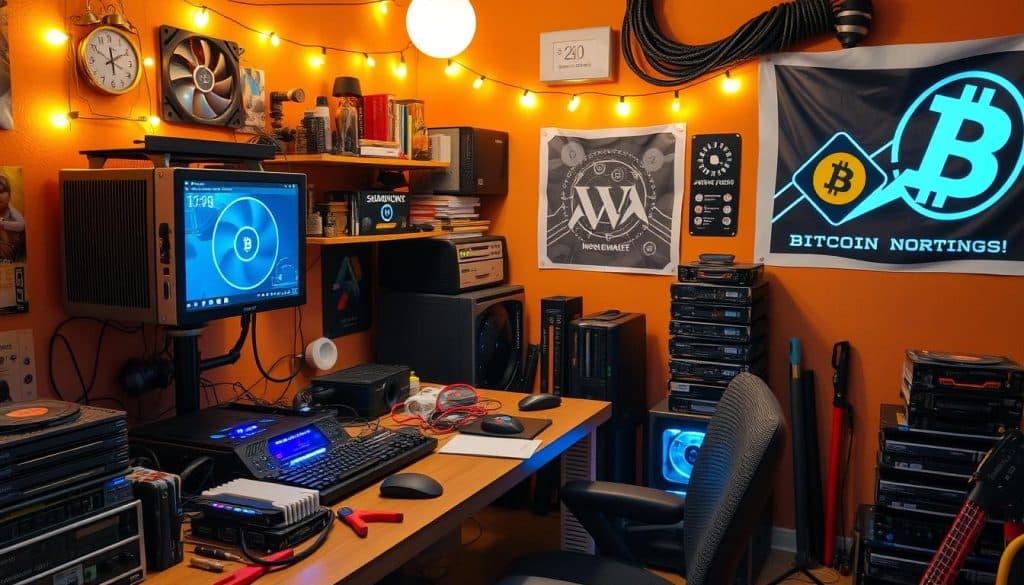With Bitcoin becoming more popular, many people are wondering how they can join in on the action. One of the first things you’ll need if you’re considering getting into cryptocurrency is a Bitcoin wallet. But what is a Bitcoin wallet, and how do you get started with one? In this guide, we’ll cover everything you need to know, from setting up your wallet to managing it securely.
Understanding Bitcoin Wallets
A Bitcoin wallet is like a digital wallet that lets you store, send, and receive Bitcoin. It’s similar to a regular wallet, but instead of cash, it holds your digital currency. There are different types of Bitcoin wallets out there. Software wallets can be installed on your desktop or mobile device, web wallets operate through your browser, hardware wallets are physical devices that you can hold in your hand, and paper wallets are simply pieces of paper with your wallet’s information printed on them. Wallets that connect to the internet are called “hot wallets,” while those that stay offline are known as “cold wallets.” Each type offers different levels of convenience and security, so it’s important to find the one that suits you best.
Getting Started with a Bitcoin Wallet
To get up and running with a Bitcoin wallet, you’ll need a few basics. First, you need a device—like a computer, smartphone, or tablet—that can support the wallet app or software you want to use. You’ll also need an internet connection to download the wallet and make transactions. Having a basic understanding of cryptocurrency can be helpful, but it’s not essential. You can pick up the basics as you go along.
Picking the Right Wallet
Choosing the right Bitcoin wallet depends on what you’re looking for. Security should be a top priority; you want a wallet that offers strong protection, like encryption and two-factor authentication. User-friendliness is also key—especially if you’re new to Bitcoin. Make sure the wallet is compatible with your devices, whether it’s a smartphone or desktop. It’s also a good idea to do some research and read reviews to find a wallet that has a solid reputation. The right wallet will balance security, ease of use, and compatibility with your needs.
Setting Up Your First Bitcoin Wallet
Once you’ve chosen a wallet, it’s time to set it up. This usually means downloading the software or app and installing it on your device. You’ll have the option to create a new wallet or import an existing one if you have a recovery phrase. Make sure to back up your wallet as part of the setup. This often involves writing down a series of random words known as a seed phrase. Keep this phrase safe—anyone who has it can access your Bitcoin.
Keeping Your Wallet Secure
Security is crucial when it comes to managing your Bitcoin wallet. Start by making sure your private keys—essentially the passwords to your Bitcoin—are stored securely and never shared. The seed phrase is just as important; it’s your backup in case you lose access to your wallet. Store it offline in a secure place. Enabling two-factor authentication (2FA) is a good idea for added security. Keeping your wallet software up to date will also help protect against any potential vulnerabilities.
Verifying Your Identity
Some wallet providers may ask you to verify your identity to comply with regulations or to unlock certain features. This process is called Know Your Customer (KYC) or Anti-Money Laundering (AML) compliance. It usually involves providing a government-issued ID and proof of address. Knowing when and why you might need to verify your identity can help you choose the right wallet and avoid any hiccups down the line.
Adding Funds to Your Wallet
Once your wallet is set up and secure, you’ll want to add some Bitcoin to it. There are a few ways to do this, like buying Bitcoin on a cryptocurrency exchange, trading directly with another person, using a Bitcoin ATM, or even earning Bitcoin through work or services. After you have some Bitcoin, you can transfer it to your wallet by using your unique wallet address.
Understanding How Transactions Work
Knowing how Bitcoin transactions work is essential. Each transaction involves sending Bitcoin from one wallet to another and is recorded on a public ledger known as the blockchain. You’ll need to pay a transaction fee, which varies depending on network activity. Understanding these fees and how long it takes for transactions to be confirmed will help you manage your wallet more effectively.
Managing Your Bitcoin Wallet
After adding funds, you’ll want to manage your Bitcoin wallet properly. This means regularly checking your balance, sending and receiving Bitcoin, and keeping track of your transaction history. Make sure to back up your wallet often to protect against data loss. A backup ensures that you can recover your funds if something happens to your device.
Connecting with Exchanges and Other Services
To make the most of your Bitcoin wallet, consider connecting it with a cryptocurrency exchange or other services. This allows you to trade Bitcoin, make online purchases, or use your wallet with other services that accept Bitcoin. Depending on your needs, you might also use your wallet for additional cryptocurrencies.
Comparing Mobile and Desktop Wallets
When deciding between a mobile or desktop wallet, think about what you need. Mobile wallets are great for convenience and portability but may be more vulnerable if your phone is lost or stolen. Desktop wallets can offer more security but are less handy for quick transactions. Knowing the pros and cons of each can help you make the right choice.
Hardware Wallets for Extra Security
If you’re looking for even more security, hardware wallets might be the way to go. These devices store your private keys offline, which makes them less susceptible to online hacks. They’re a great choice for those who plan to hold a significant amount of Bitcoin or use it for long-term storage.
Avoiding Common Mistakes
There are some mistakes you’ll want to avoid when using a Bitcoin wallet. Losing your private keys or seed phrases can mean losing access to your Bitcoin forever, so make sure to keep them safe. Double-check wallet addresses before sending funds to avoid mistakes, and be wary of phishing scams or suspicious links.
Staying Updated
The world of Bitcoin is always changing, so it’s a good idea to stay informed. Keep your wallet software up to date and stay tuned to news and developments in the Bitcoin space. Understanding updates and changes to the Bitcoin network will help you make informed decisions and stay ahead.
Legal and Tax Considerations
Owning and using Bitcoin comes with legal and tax responsibilities. Be sure to understand the regulations in your area and keep accurate records of all transactions. This will help you stay compliant with the law and avoid any potential issues down the road.
The Future of Bitcoin Wallets
As Bitcoin and other cryptocurrencies grow, so will the technology around wallets. Look out for new trends, like better integration with decentralized finance platforms or enhancements in user experience and security. Staying on top of these changes will help you make the most of your Bitcoin wallet.
Conclusion
The process of getting started with Bitcoin wallets may seem confusing, but with the right preparation, it can be an exciting journey into digital currency. Choose a wallet that meets your needs, secure it properly, and keep learning as you go. The more informed you are, the better equipped you’ll be to make smart decisions in the fast-paced Bitcoin market. Trade wisely.
























 Bitcoin
Bitcoin  Ethereum
Ethereum  Tether
Tether  XRP
XRP  USDC
USDC  Lido Staked Ether
Lido Staked Ether  TRON
TRON  Dogecoin
Dogecoin  Cardano
Cardano  Figure Heloc
Figure Heloc  WhiteBIT Coin
WhiteBIT Coin  Wrapped stETH
Wrapped stETH  Bitcoin Cash
Bitcoin Cash  Wrapped Bitcoin
Wrapped Bitcoin  USDS
USDS  Chainlink
Chainlink  Wrapped eETH
Wrapped eETH  Binance Bridged USDT (BNB Smart Chain)
Binance Bridged USDT (BNB Smart Chain)  LEO Token
LEO Token  WETH
WETH  Hyperliquid
Hyperliquid  Monero
Monero  Stellar
Stellar  Zcash
Zcash  Ethena USDe
Ethena USDe  Coinbase Wrapped BTC
Coinbase Wrapped BTC  Litecoin
Litecoin  Sui
Sui  Avalanche
Avalanche  Hedera
Hedera  Shiba Inu
Shiba Inu  sUSDS
sUSDS  USDT0
USDT0  Dai
Dai  Mantle
Mantle  PayPal USD
PayPal USD  Toncoin
Toncoin  World Liberty Financial
World Liberty Financial  Cronos
Cronos  Ethena Staked USDe
Ethena Staked USDe  Uniswap
Uniswap  Polkadot
Polkadot  MemeCore
MemeCore  Aave
Aave  USD1
USD1  Bittensor
Bittensor  Rain
Rain  Canton
Canton